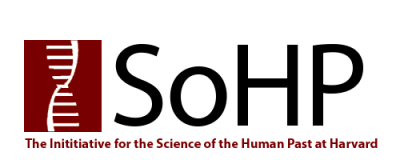Date:
Location:
The growing prominence of the work of Harvard’s Initiative for the Science of the Human Past (SoHP) and the Max Planck-Harvard Research Center for the Archaeoscience of the Ancient Mediterranean (MHAAM) was hard to miss at the eighth biennial world gathering of biomolecular archaeologists in Jena, Germany, September 18-21, 2018. The International Symposium on Biomolecular Archaeology (ISBA) was hosted by Johannes Krause and the Max Planck Institute for the Science of Human History (MPISHH), SoHP’s collaborative partner in the creation of MHAAM. The previous ISBA meeting, held at Oxford in 2016, attracted about 200 participants. The explosive growth of the new discipline of archaeoscience was manifest this year in Jena: with more than 400 participants, attendance outstripped all predictions for a conference meeting in a lovely but somewhat out-of-the way corner of eastern Germany.
Harvard’s SoHP and MHAAM investigators and their projects were exceptionally well represented. After an opening lecture by Svante Pääbö, Wednesday’s papers included David Reich on the genomic formation of south and central Asia; Alissa Mittnik used archaeogenetics to discover household structure and marital patterns among Bronze Age farmsteads in Bavaria, while Eadaoin Harney presented on the mysterious skeletons of Roopkund and Iñigo Olalde sketched the genetic history of the Iberian peninsula over the last 8000 years from aDNA. On Friday Noreen Tuross reevaluated Neanderthal subsistence, current MHAAM post-doc Saskia E. Ryan explored changes in ancient diets from birth to toddling through novel uses of light stable isotopes in tooth dentin, and Nathan Nakatsuka estimated ancient nuclear DNA contamination from linkage disequilibrium patterns.
Harvard-authored posters kept up the pace: the two current holders of MHAAM graduate fellowships, second-year PhD candidates Aurora Allshouse (Archaeology/Anthropology) and Megan Michel (Human Evolutionary Biology), respectively, used isotopes to track movement around a busy Byzantine port city, and highlighted the aDNA search for markers of malaria among ancient Sardinians. Prof. Tuross presented recent questions on the microbiome and isotopic fractionation, Dr. Linda M. Reynard took a new look at fundamental methodological questions arising from light stable isotopes in archaeological contexts, and Alexander Kim examined Yeniseian hypotheses in light of genome-wide ancient DNA from historical Siberia.
Finally, two scientists working at MPISHH on the historical plague pandemics that are central to MHAAM’s transatlantic research program presented critical insights featuring new evidence from mass graves, three of which were identified by the Harvard MHAAM pandemic team. In his poster “Ancient Yersinia pestis genomes from Britain, France, Germany and Spain reveal extensive strain diversity during the First Plague Pandemic (541-750 CE),” Marcel Keller presented the first robust molecular proof that the Justinianic Pandemic reached Britain, France and Anglo-Saxon England, and abundant new evidence from early medieval Bavaria. Gunnar U. Neumann underlined plague persistence in Europe during the Second Pandemic thanks to a 16th century Yersinia pestis genome from particularly well-preserved individuals from Logroño, Spain. McCormick co-authored both papers. Alumni of the SoHP network also featured prominently in the meeting, including former Harvard post-docs Pontus Skoglund (Francis Crick Institute, London) who gave a paper on modelling early human lineages in Africa, and Michael Campana (Smithsonian Institution, Center for Conservation Genomics) who displayed evidence for Ancient DNA phylogenomics using DNA capture and maximal information (super)trees.
